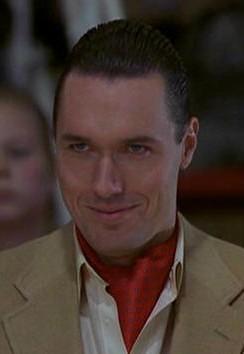- Joined
- Aug 18, 2009
- Messages
- 47,435
- Reaction score
- 20,857
Muscle memory is built through repetition. The question was "Is there anything it (kata) improves that can't be done better and more efficiently by something else?"
I'd argue that the same benefits you ascribe to kata above can be accomplished by drilling instead of learning long fixed sequences. For example your average karate class will drill reverse punching whilst in zenkutsu dachi. Take Taikyoku Sono Ichi - is drilling that kata repeatedly better than drilling oi tsuki/gedan barai in zenkutsu dachi by itself? You can even shadowbox that without the restriction that kata enables on you by staying in a fixed pattern of movement.
I don't believe in the muscle memory thing that is often attributed to kata. I don't think (one of) the purposes of kata is to drill muscle memory - I think it's simply a physical record of techniques & how they should be applied (i.e. with which stance/weight distribution). I have no problem with people dissecting kata sequences into smaller chunks & conscripting these to memory by repetition in fact like you've mentioned above it can be extremely beneficial and that's more to my liking. In fact this is what we do in most karate classes - i.e. drilling x technique in x stance or what Masao Kagawa demonstrated above switching from zenkutsu to kokutsu back to zenkutsu.
My point is you don't have to memorize whole katas to get that down like you suggest. In fact shadowboxing could do the same thing without the restriction of being in a fixed pattern of movement like with kata.
That's just my opinion.
I agree on most of the other stuff you've said though (the post above the one I'm replying to). Especially when it comes to there being too many katas and a disconnect with kata/kihon/kumite. It's one of the primary reasons why I stopped Kyokushin training because there was huge disconnect between kata, kumite & kihon to the point that 80% of kata/kihon content wasn't really addressed in kumite and the fact that there were 26 katas - where no-one could really explain why we're learning them, what they were for or why it was even a requirement to learn things in ura. Sure the training made me tougher physically & mentally but there was a lot missing that I felt was crucial & I was missing out on.
In contrast I found Okinawan Goju & Uechi ryu to be far less complicated, a lot more basic/compact and more in sync with kata.
Since I never trained in a super traditional dojo, I can't speak to the specifics of how those places train. When I learned, we learned the entire Heian series at once and drilled them as a group from the beginning. Then we learned Tekki Shodan and then Hangetsu. That was our foundation. And since it was very small group of people training, class tended to have lots of variation in the kihon and lots of partner drills beyond the standard 1-3-5 step sparring.
My perspective on the value of the repetition for muscle memory comes from my sparring experience outside of karate. When I went out and sparred outside of karate, I found that I was able to improvise and apply techniques/defenses that I had never formally drilled because I had drilled them in the katas so many time.
Things would happen and I'd find myself flowing into kata sequences because they just naturally worked. Not 6 steps sequences with turning on the heel and yada, yada, yada but 2-4 step sequences.
It was eye opening. Was it a substitute for drilling specific techniques over and over again? No, it was a complement to them. Specific drilling would have refined those techniques. But you can't drill every thing every class. There just isn't enough time in the day to handle your fundamentals then drill every technique presented in a dozen or more kata and then actively apply them via sparring.
Let me lay out how i would teach it to illustrate my point. In the ideal world, I'd take a kata (say Bassai Dai since I referenced that earlier), and teach the kata in it's entirety. My kihon would be specific sequences from the kata to reinforce those movements, the balance, transitions, etc. Then partner drills on specific applications from those specific sequences. Then sparring. And that would be the only way you teach for a year or more. But that can't work in a large class with multiple mixed belts learning different katas at the same time. Kihon ends up being less kata relevant because everyone isn't doing the same kata, even if they're doing the same kihon.
My experience showed me that just the constant repetition of kata was making me a better fighter. Are there better ways to drill specific techniques? Absolutely. But, to me, the kata should be treated as the foundation for the specific techniques you're drilling that day. Do the kata, drill the techniques from the kata including the transitions, repeat the kata. Go spar. But for the techniques that you're not drilling, doing the other kata is a way to get some of the repetition in that will improve the techniques later.
But that's my experience. Everyone's karate journey is different and the more traditional the dojo and the larger the classes, the less relevant my experience seems to be.


